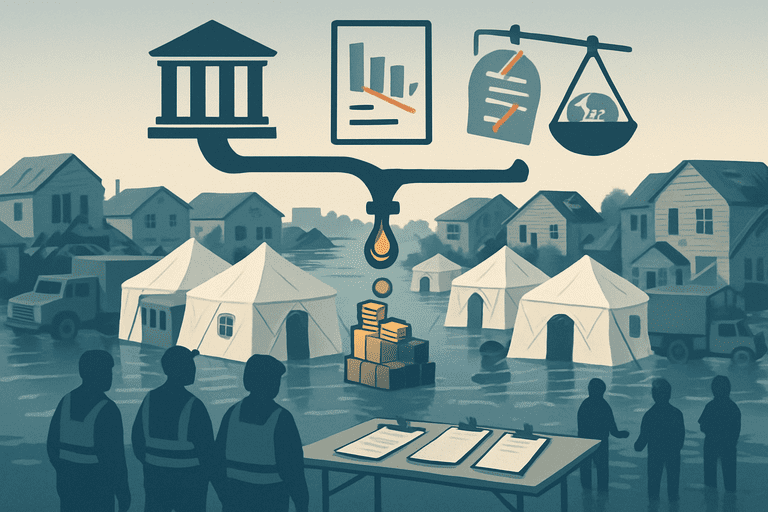🎧 Listen to the summary:
The administration’s move to overhaul — and, where necessary, abolish — FEMA is a bold, unmistakable policy choice: shift disaster responsibility back to states, simplify federal payments, and force long‑overdue clarity in a fragmented emergency-management system. Where past administrations tinkered, this one is acting decisively, using executive orders, an interagency FEMA Review Council, targeted program cancellations, and personnel reassignments to produce concrete options for “what FEMA should be” in the months after the 2025 hurricane season.
Concrete measures already on the table signal an uncompromising preference for scale and simplicity: tailored reimbursements would give way to larger recovery block grants to states, the BRIC mitigation program would be terminated, and elements of the Federal Flood Risk Management Standard would be suspended. Those are not symbolic gestures — they are deliberate cuts of cumbersome federal strings in favor of empowering state-led rebuilding and quicker, broader dispersal of resources.
Doing something substantial requires hard choices, and the administration has not flinched. Operational shifts inside the agency — leadership changes, departures of several senior officials, and the reassignment of FEMA human-resources and security staff to other enforcement duties during peak hurricane months — have reduced the incident-management bench at the start of the 2025 season. Watchdog reports of delayed obligations for congressionally approved shelter funds, questioned COVID-19 grant costs, and persistent contracting and oversight gaps are real and significant. So are the trade‑offs: loss of mitigation dollars for states, canceled or delayed resilience projects, a leaner federal safety net in favor of lump‑sum state control, reassigned FEMA staff, hiring freezes, and internal discipline measures.
Those costs are not accidental; they are the predictable consequence of decisive reform. Quicker administrative moves have come with scrutiny over oversight shortfalls, program cancellations raise litigation risk, and relaxing resilience standards may increase long‑term recovery costs — uncomfortable facts that underscore the seriousness of the agenda. Reported unintended consequences — from delayed search‑and‑rescue deployments to state legal challenges and questions about wrongful detentions tied to policy shifts — will test implementation, but they will also demonstrate whether the new architecture can withstand pressure.
Next steps are formal and public: the Review Council’s recommendations, continued GAO and OIG oversight, pending state lawsuits, and likely congressional hearings. The administration’s approach is unapologetically ambitious — willing to bear measurable costs to replace ambiguity with order, and to trade certain comforts for a clearer, state‑empowered system that signals the government is prepared to act.
—
Deborah Cole reports on climate regulations, environmental mandates, and disaster response. She holds a degree in environmental studies from the University of Florida and worked in state-level emergency management before joining the press. Her reporting follows how policy meets practice across agencies, municipalities, and emergency zones.



